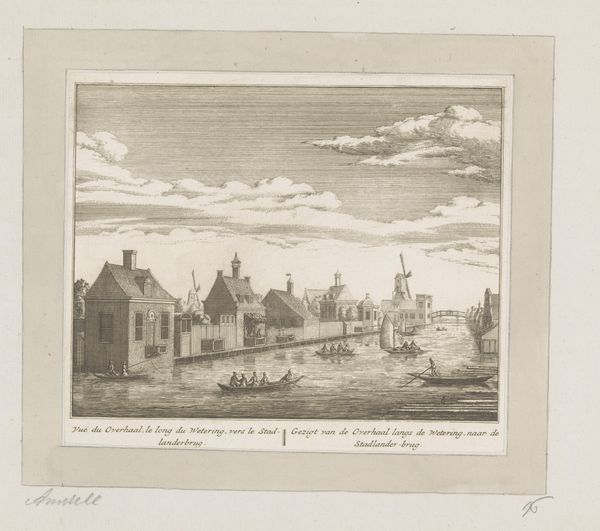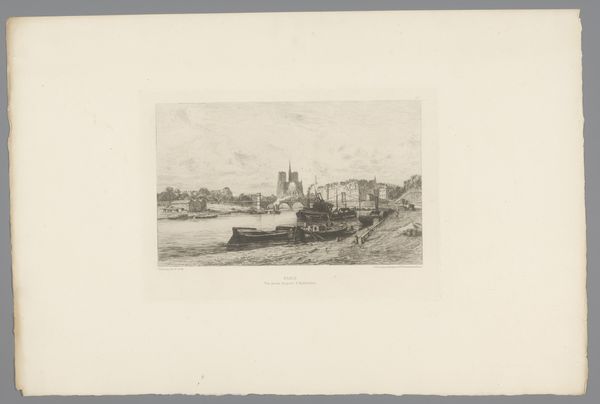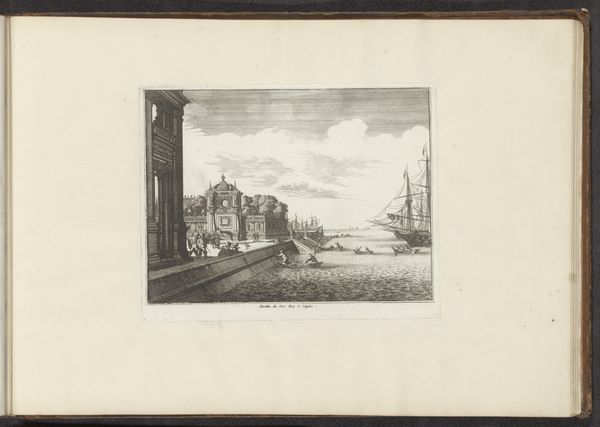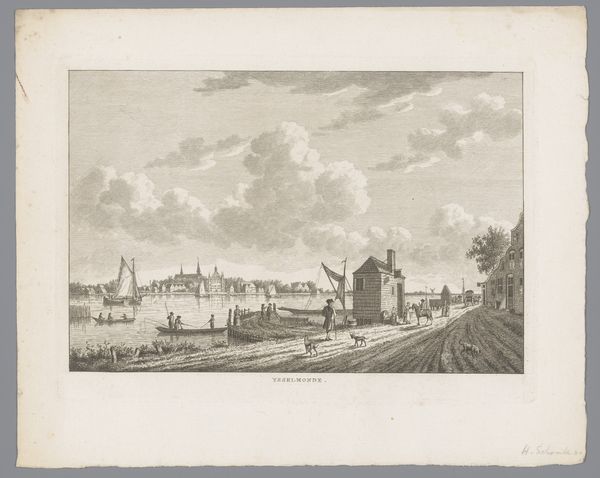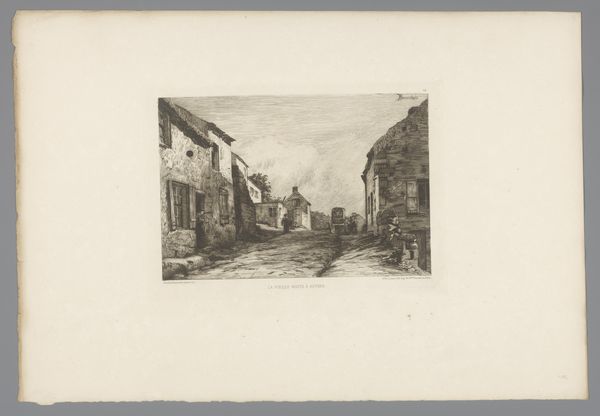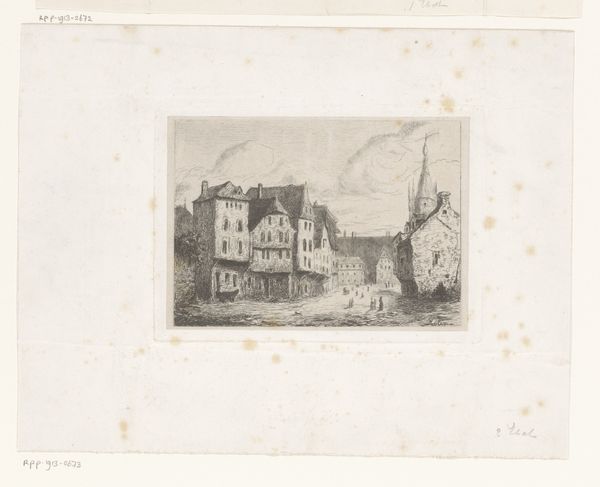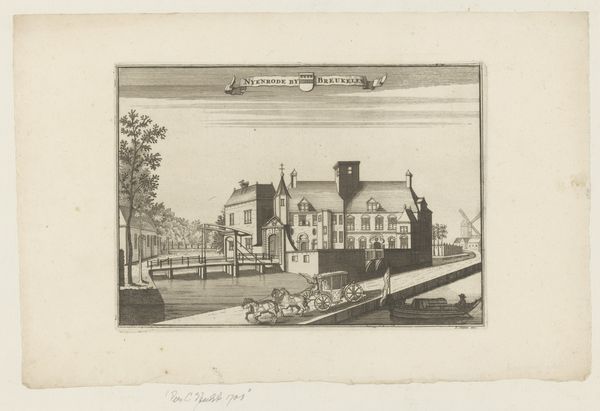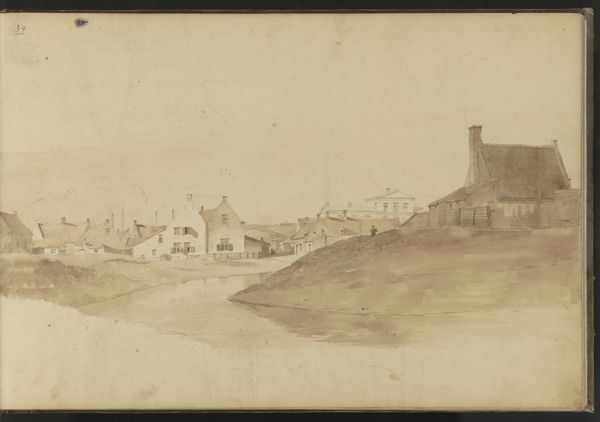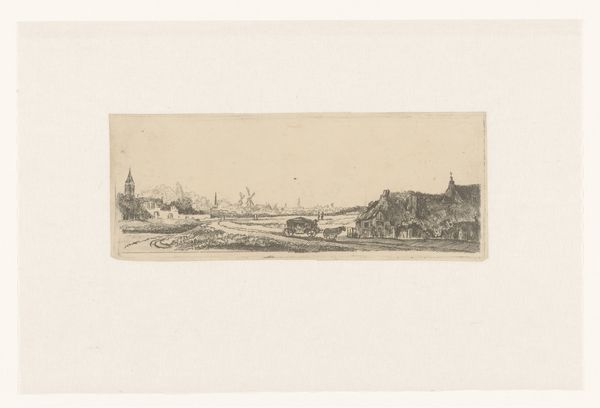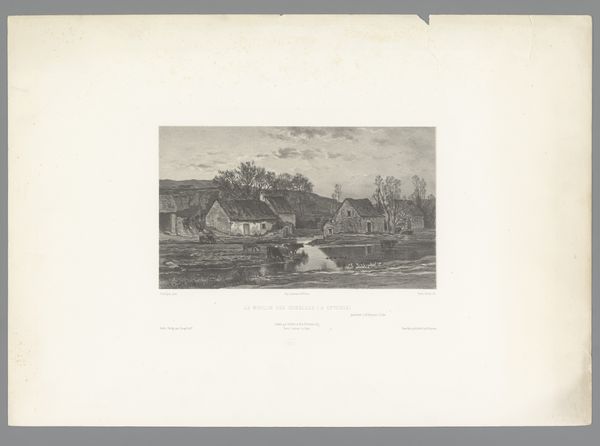
drawing, print, etching, paper, ink
#
drawing
#
dutch-golden-age
# print
#
etching
#
landscape
#
paper
#
ink
#
cityscape
Dimensions: height 97 mm, width 179 mm
Copyright: Rijks Museum: Open Domain
Curator: Here, we have a print entitled "Gezicht op de wetering richting de Stadlanderbrug," or "View of the Wetering towards the Stadlander Bridge". Created using etching and ink on paper, its authorship is credited to Gerardus Condet, sometime between 1725 and 1764. Editor: It's surprisingly serene. Despite the bustling city setting, there's a quiet simplicity to it, almost dreamlike, given the muted tones of the ink. You get the sense that it portrays an ordinary scene with the town’s buildings and people quietly coexisting. Curator: The etching really captures the Golden Age Dutch aesthetic, doesn’t it? Landscape scenes like this often present a controlled view of civic life. Consider the symbolic weight of the bridge— a connection and symbol of access, and in this case also of prosperity, a gateway linking lives and commerce. Editor: It is also interesting how much is left out. What kinds of social activities were not portrayed, which labor unacknowledged? This view emphasizes the economic strength of the time, yet obscures the struggles of the working class in plain sight. Curator: That’s an interesting angle to consider in relationship to Condet’s choices in visual presentation, framing a very particular narrative. Waterways held profound significance, serving as lifelines for trade and defense, depicted with a sense of harmony and abundance, reflecting the national pride of the era. Editor: And within the boats on the waterway, we see only men rowing. The composition offers no sense of the feminine, except for perhaps wives and daughters standing along the canal and bridges. One could certainly say it is gendered space as much as it is civic space. Curator: True. And I agree with your read that we get a curated perspective. It certainly isn't an accidental selection of content. Each mark has a specific purpose. As the cultural memory lives on through works like this, our work is to help all of our patrons have access to a richer view of what life during this period actually included. Editor: I agree wholeheartedly; to understand the artwork fully, we must reflect critically about the contexts surrounding it and embrace complex narratives and diverse stories of gender, race, labor, and status.
Comments
No comments
Be the first to comment and join the conversation on the ultimate creative platform.
